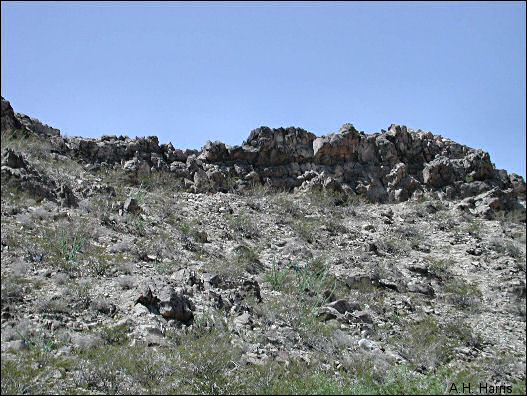

You may have noticed that not all volcanic rock looks alike. For example, the black basalt of numerous lava flows in our desert looks and is quite different from andesite, such as underlies the University of Texas at El Paso. But why the differences between the varied types of igneous rocks?
Some differences may be because of the source materials that melted deep underground to form the magma that eventually erupted as lava at the surface. But regardless of the source, the liquid rock that eventually emerges almost always differs from its source by the time it erupts onto the surface.
Magma consists of a variety of substances melted together to form the
liquid solution. These various materials melt and solidify at different temperatures
and pressures. As magma oozes its way toward the surface, pressure and temperature
change, causing some minerals to crystallize out and remain trapped below, while others
continue upward in liquid form. As temperature, pressure, and velocity of movement
toward the surface differ from place to place, so does the nature of the lava reaching
the surface.

Contributor: Arthur H. Harris, Laboratory for Environmental Biology, Centennial Museum, University of Texas at El Paso.
Desert Diary is a joint production of the Centennial Museum and KTEP National Public Radio at the University of Texas at El Paso.

Campus Andesite, UTEP. The Sun Bowl is nestled within outcrops of
andesite, with the view above being just southwest of the Sun Bowl. Photograph by A.H.
Harris. ![]()